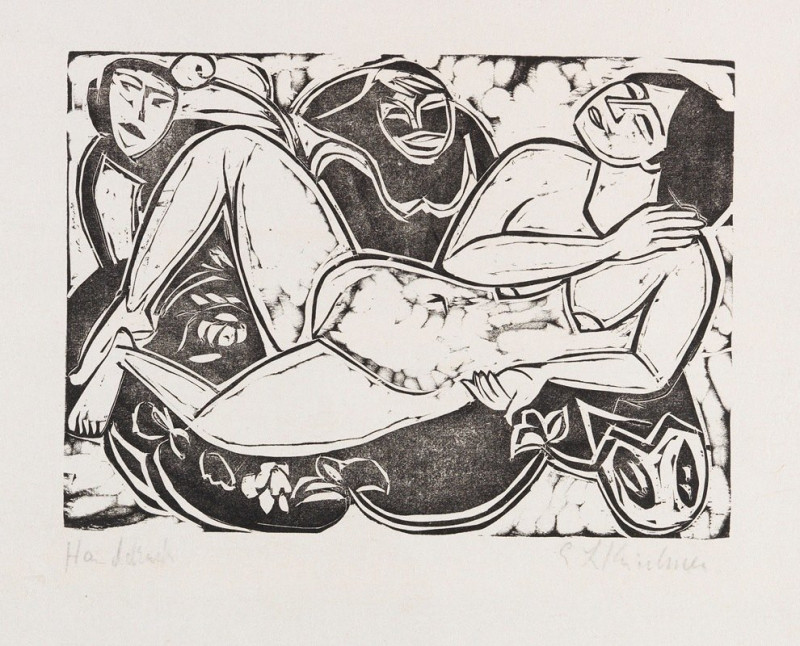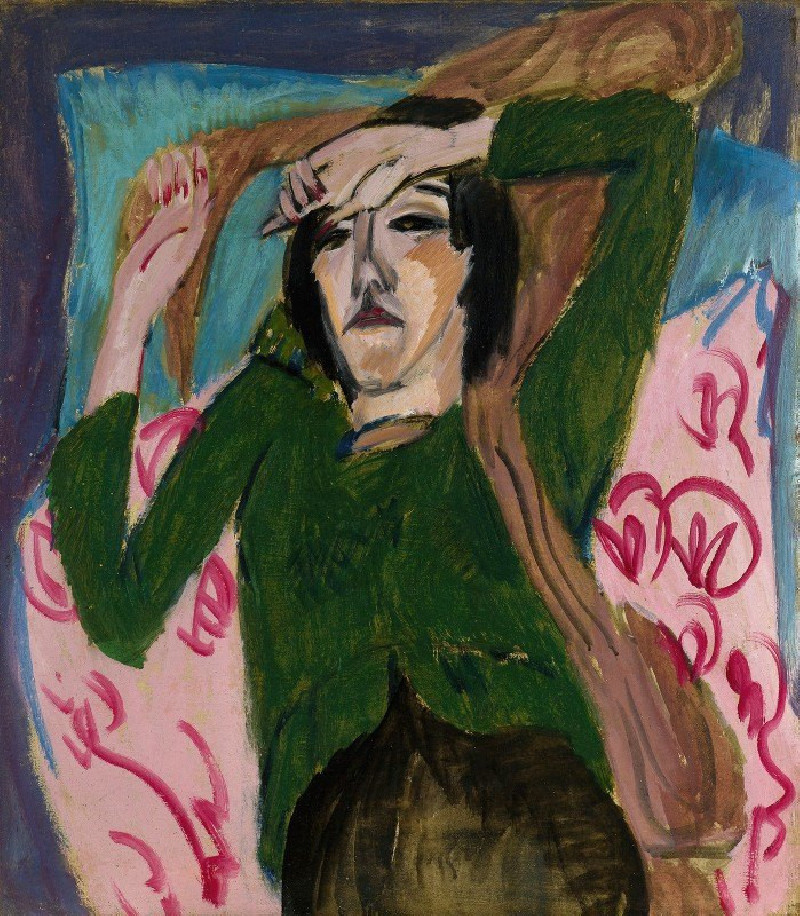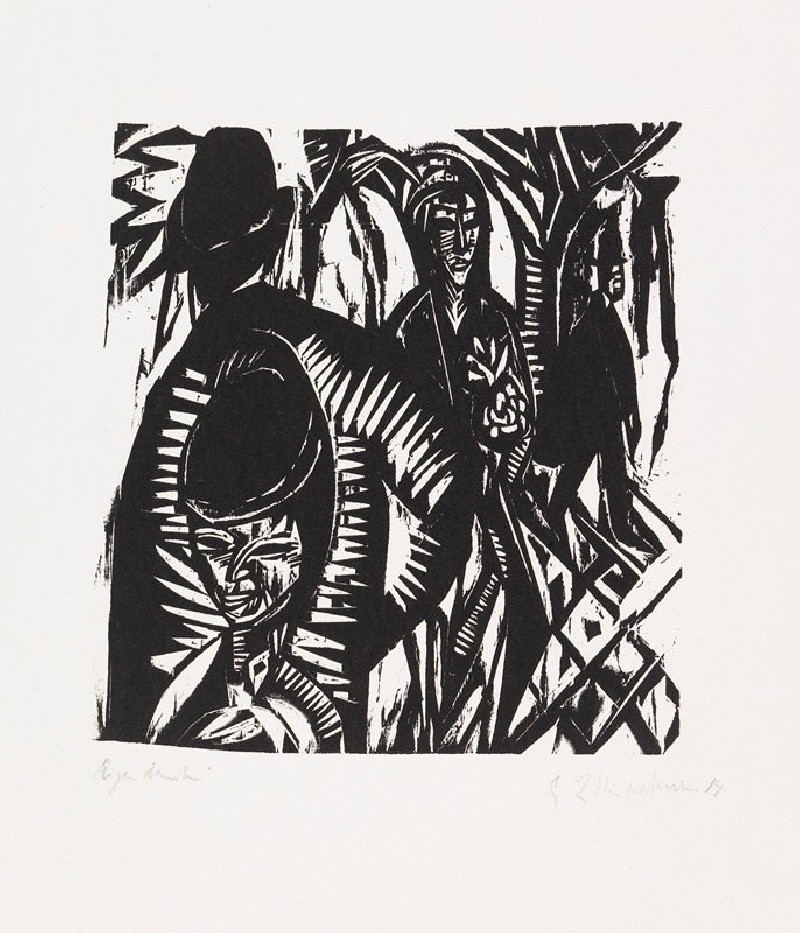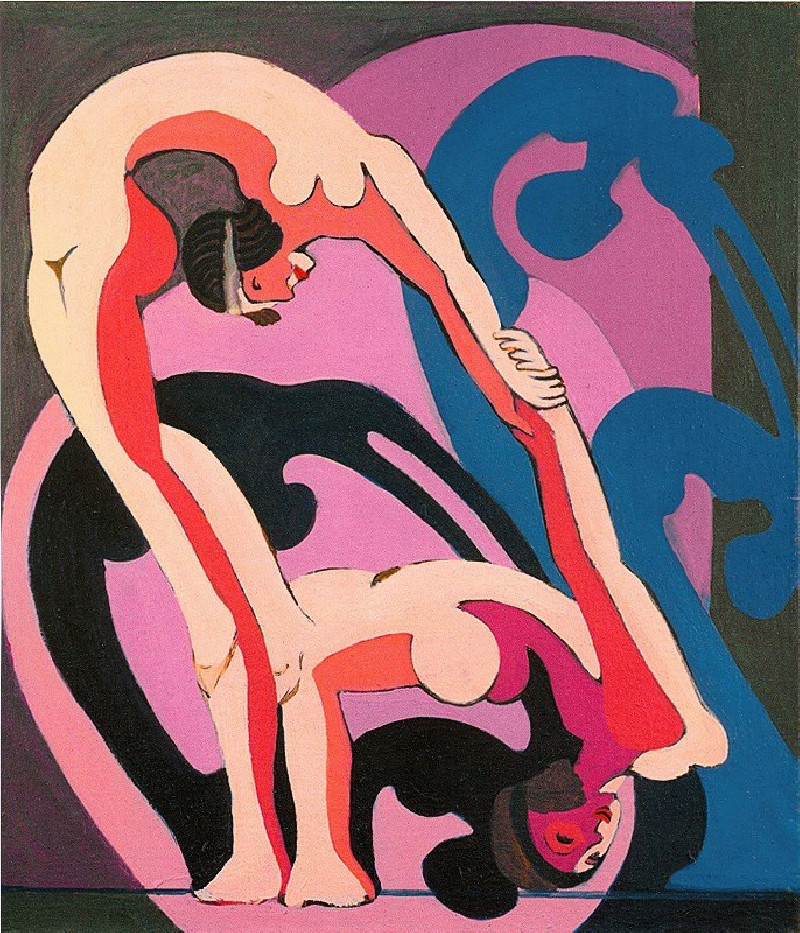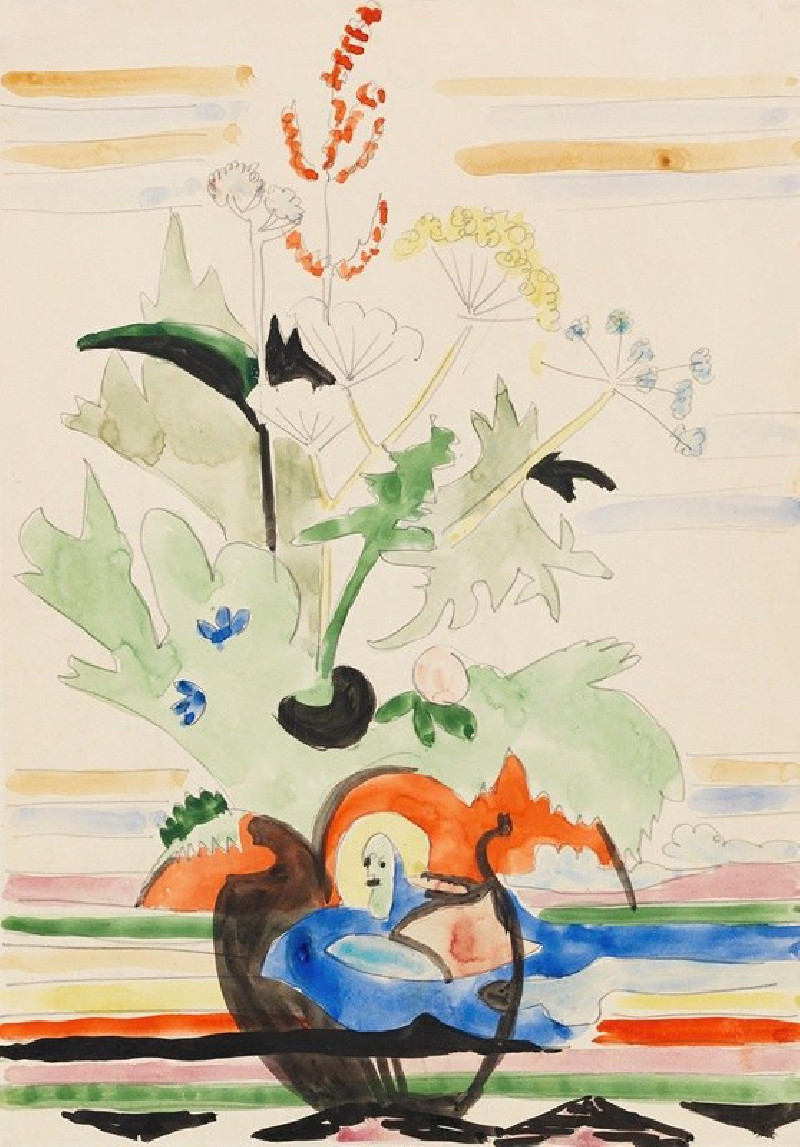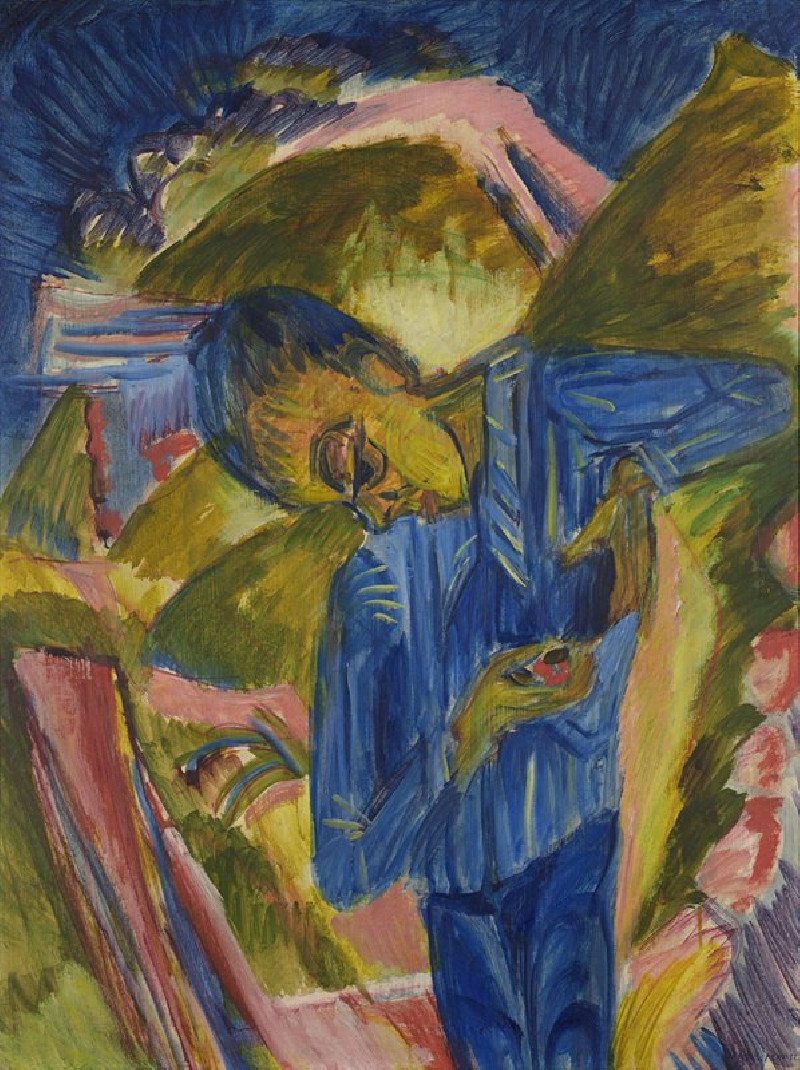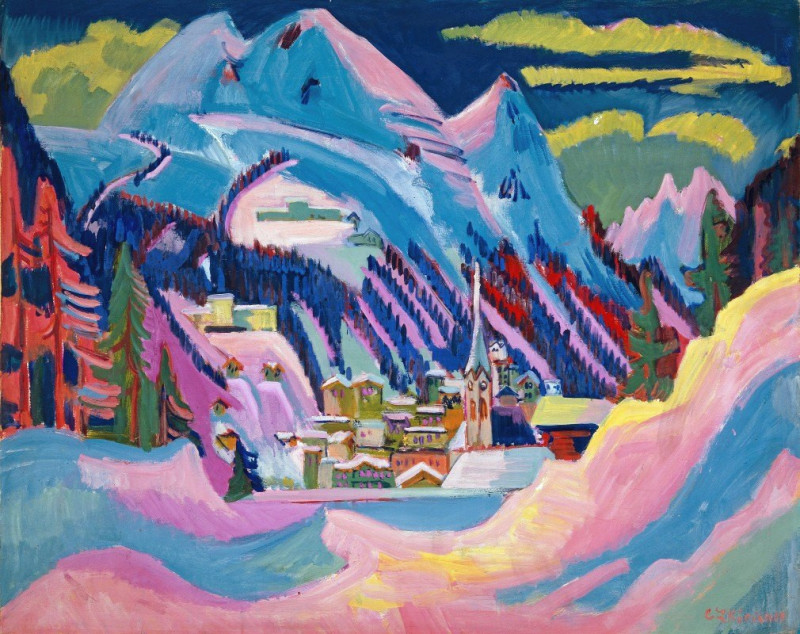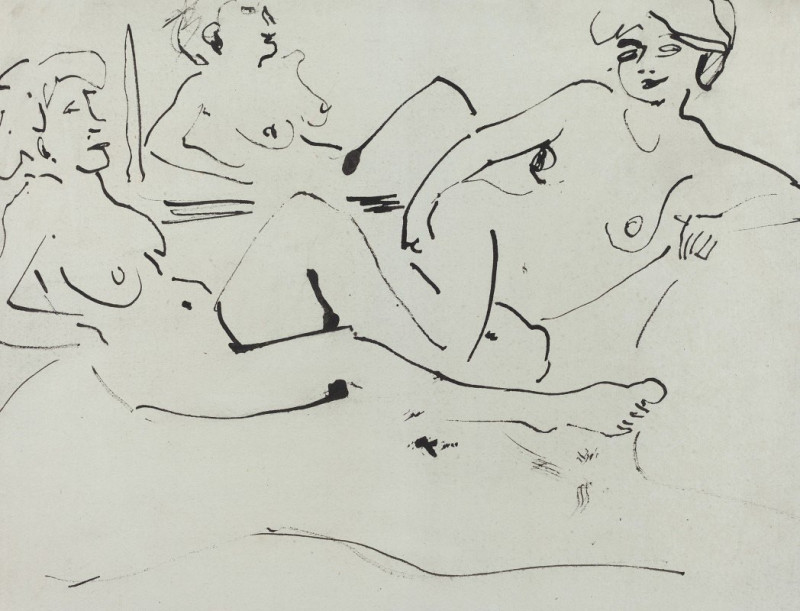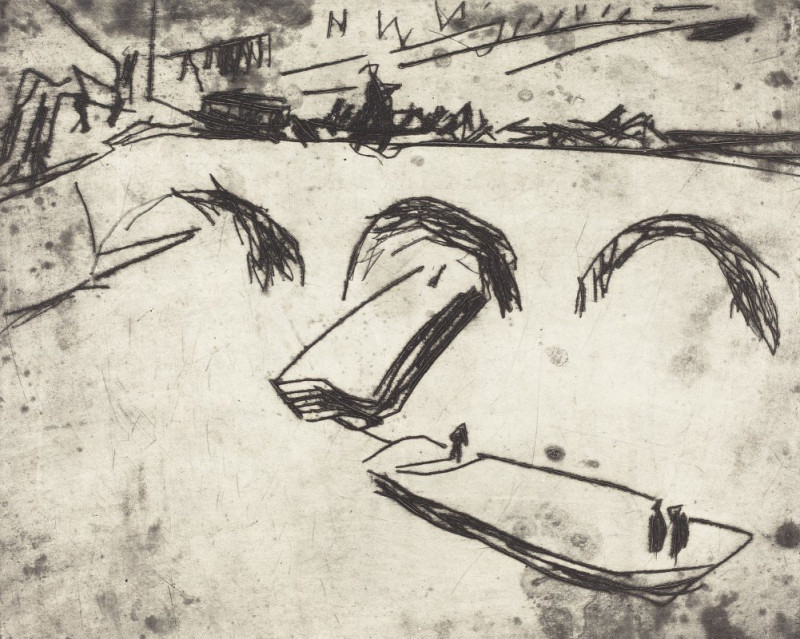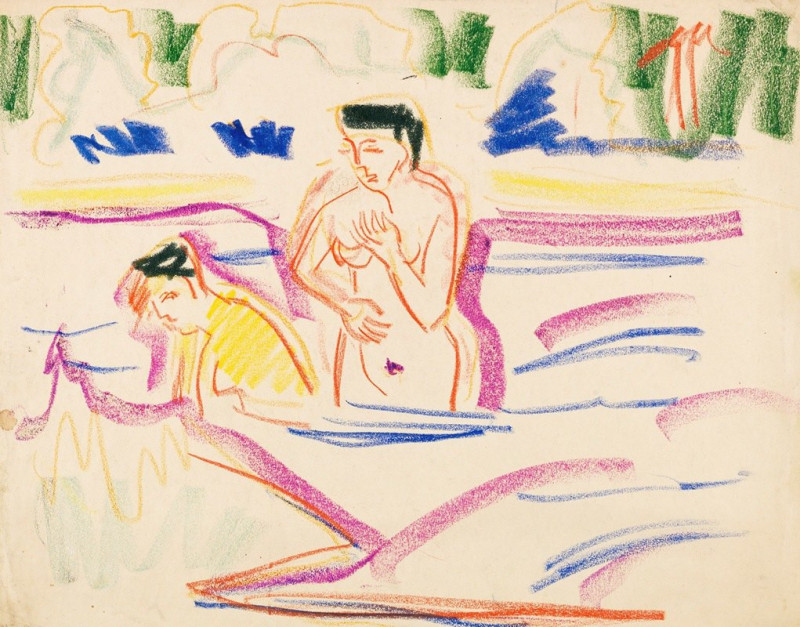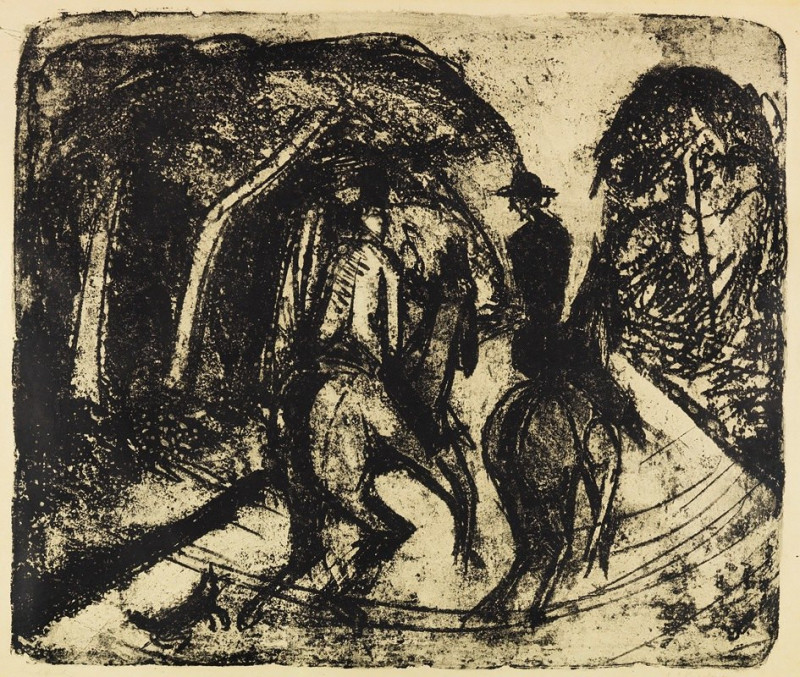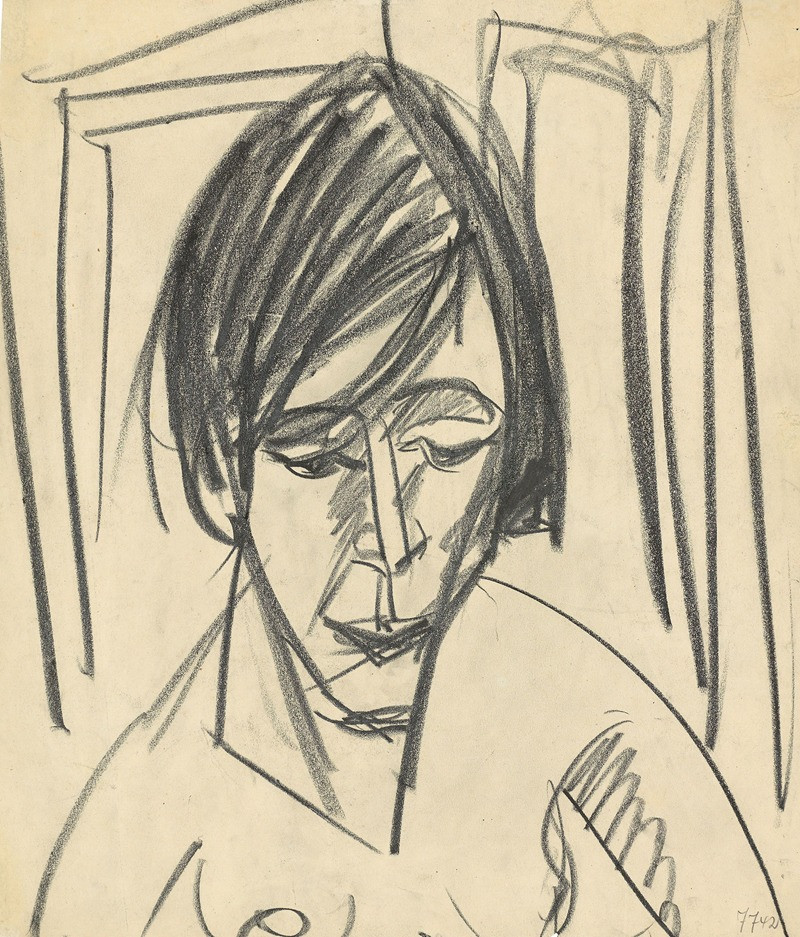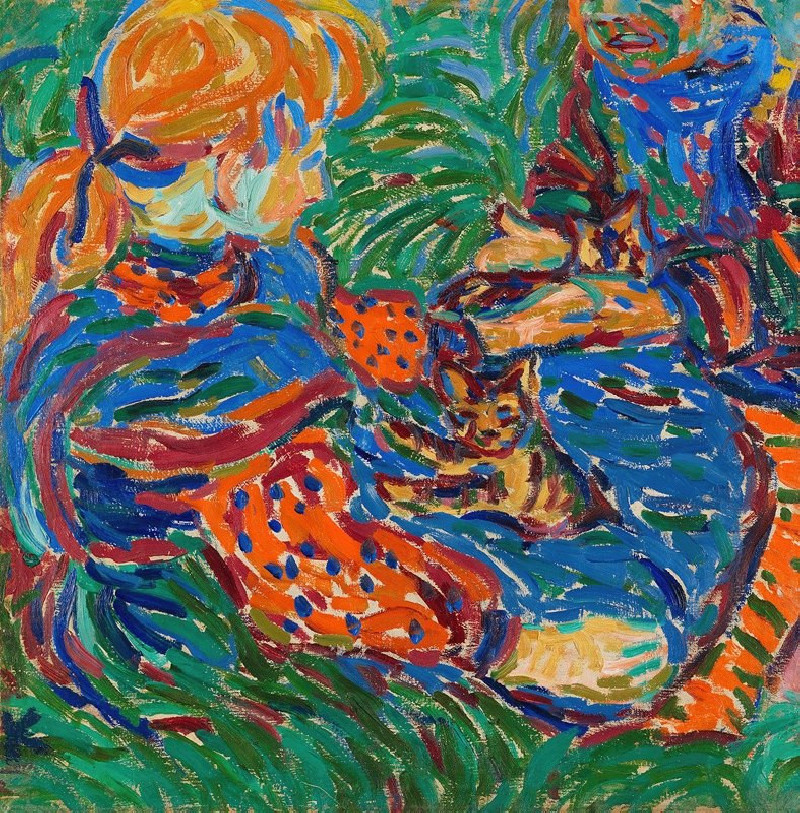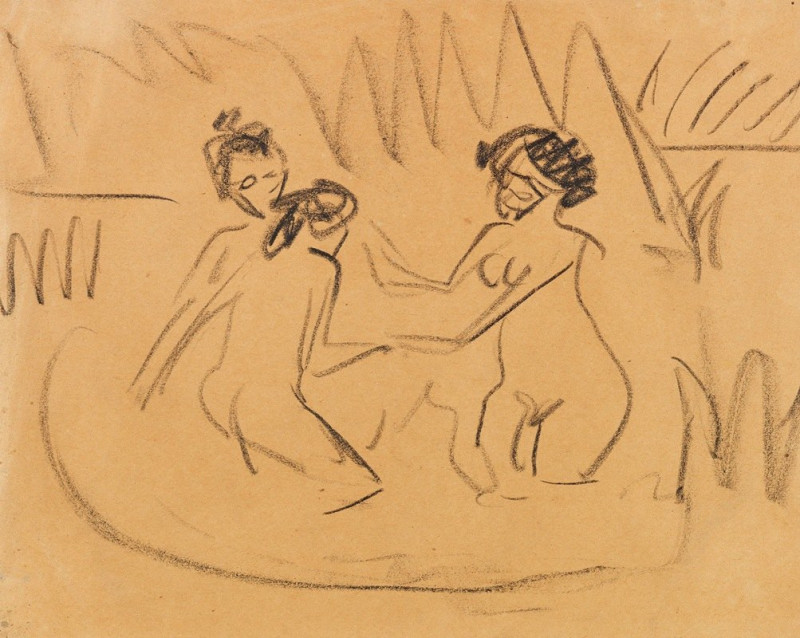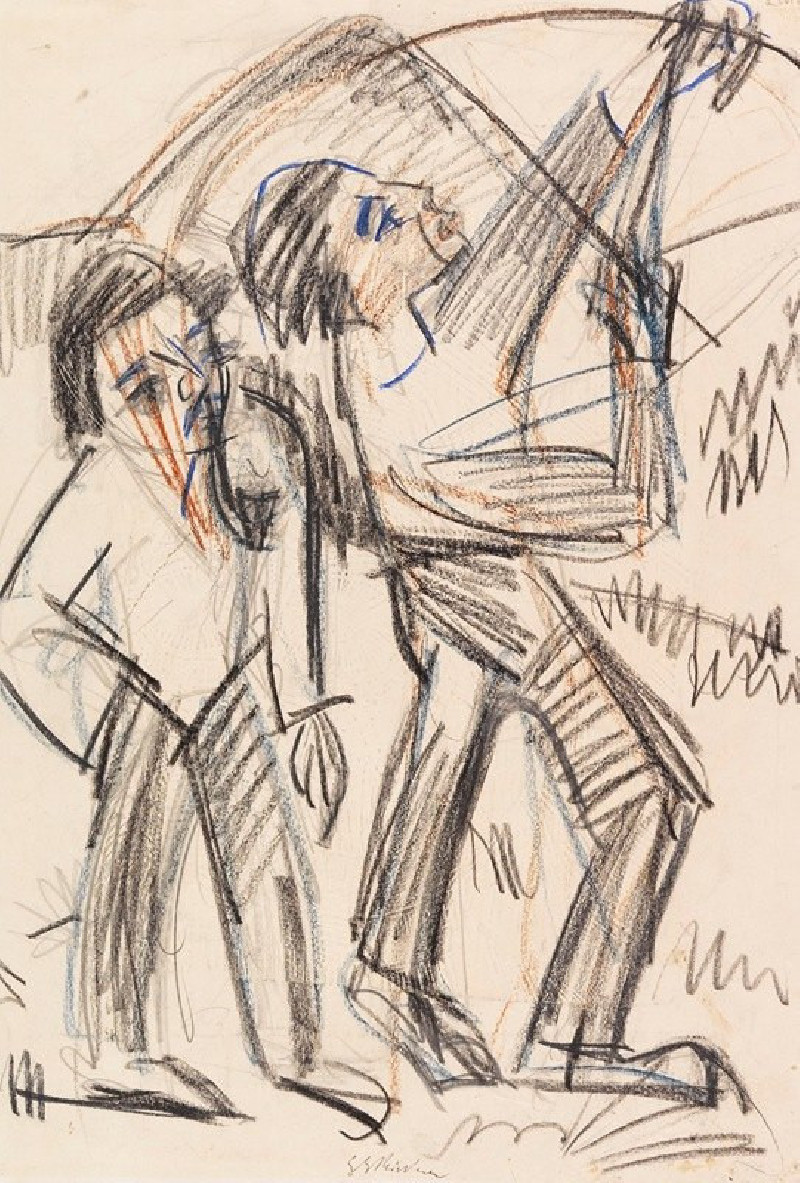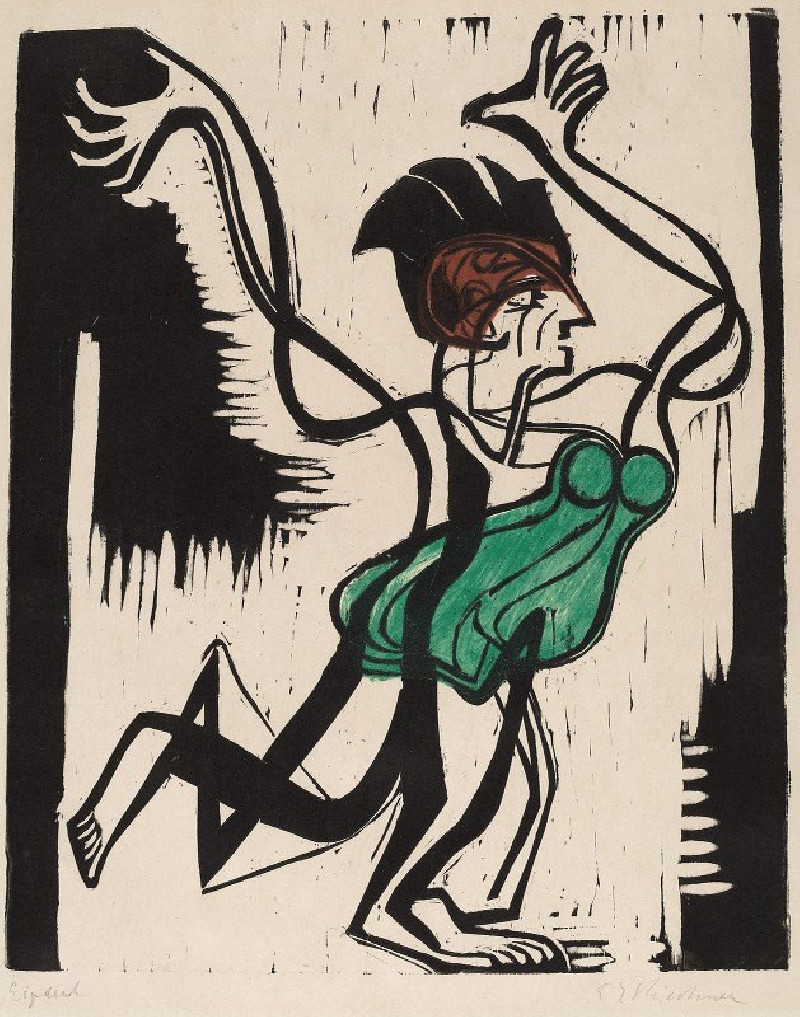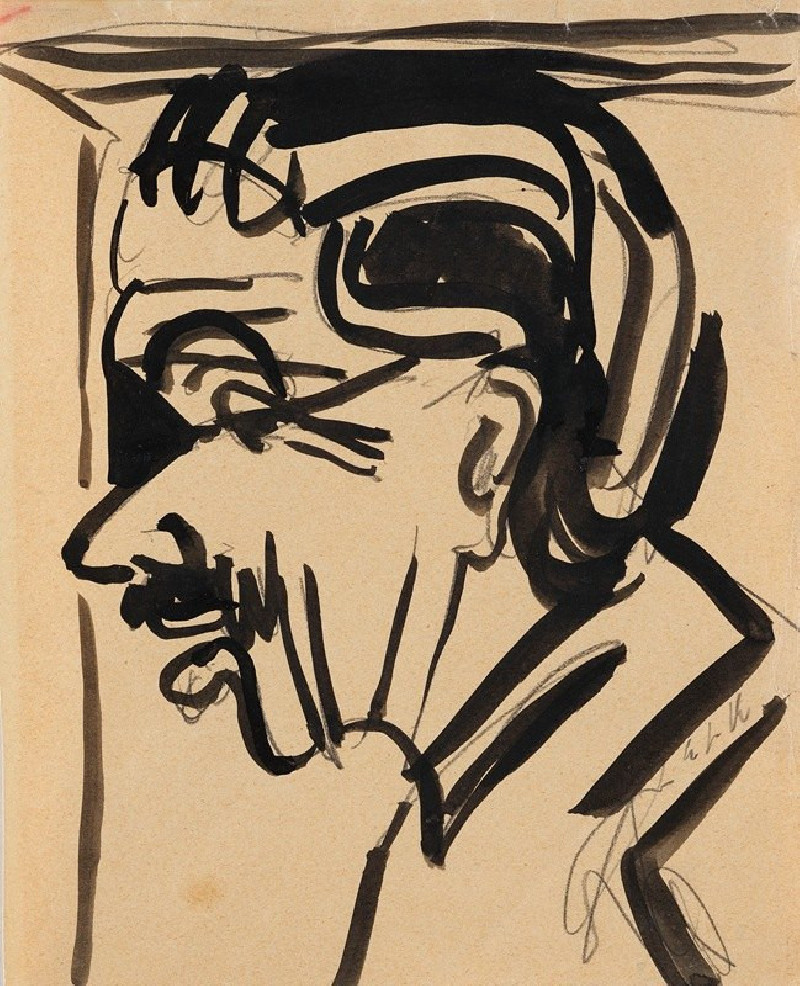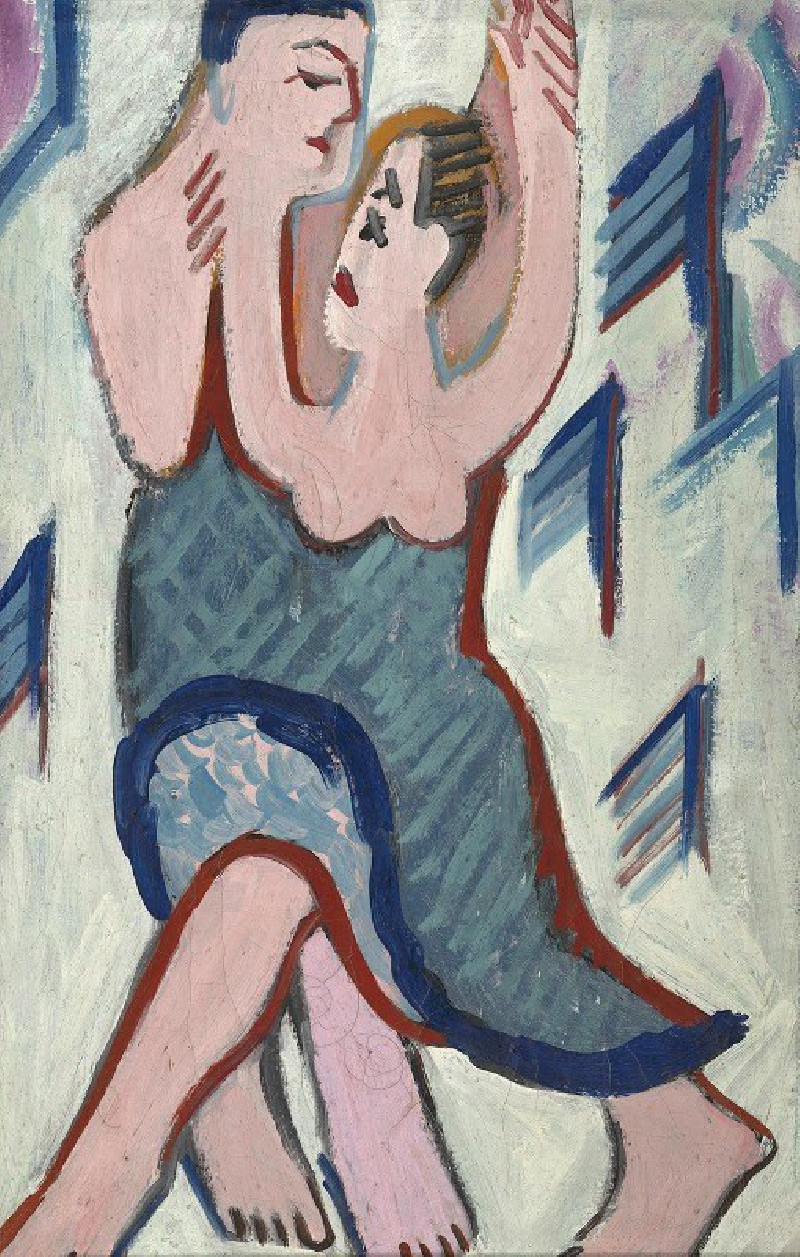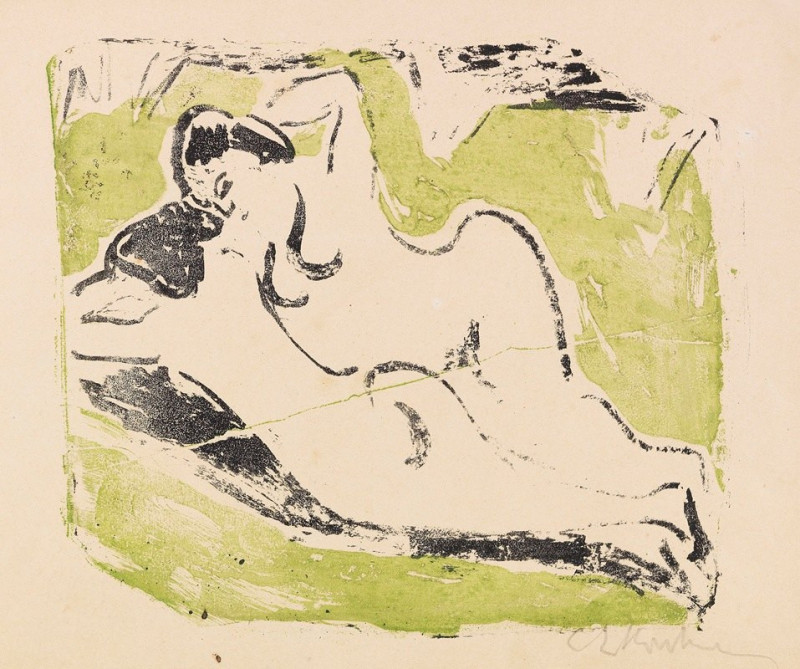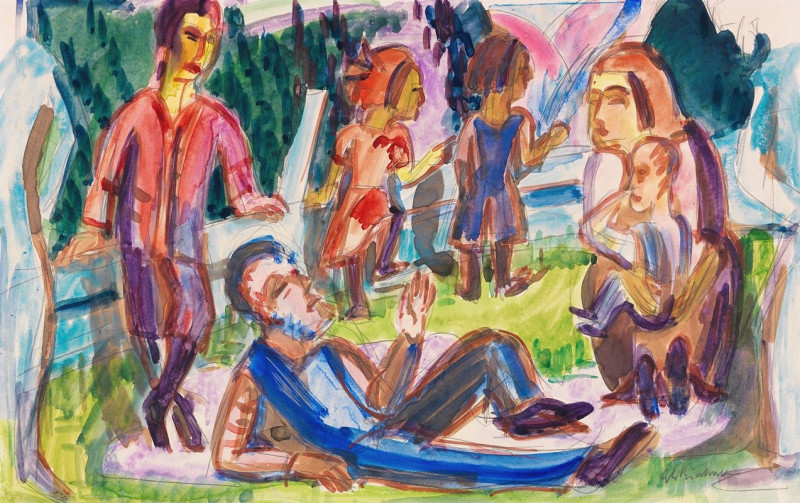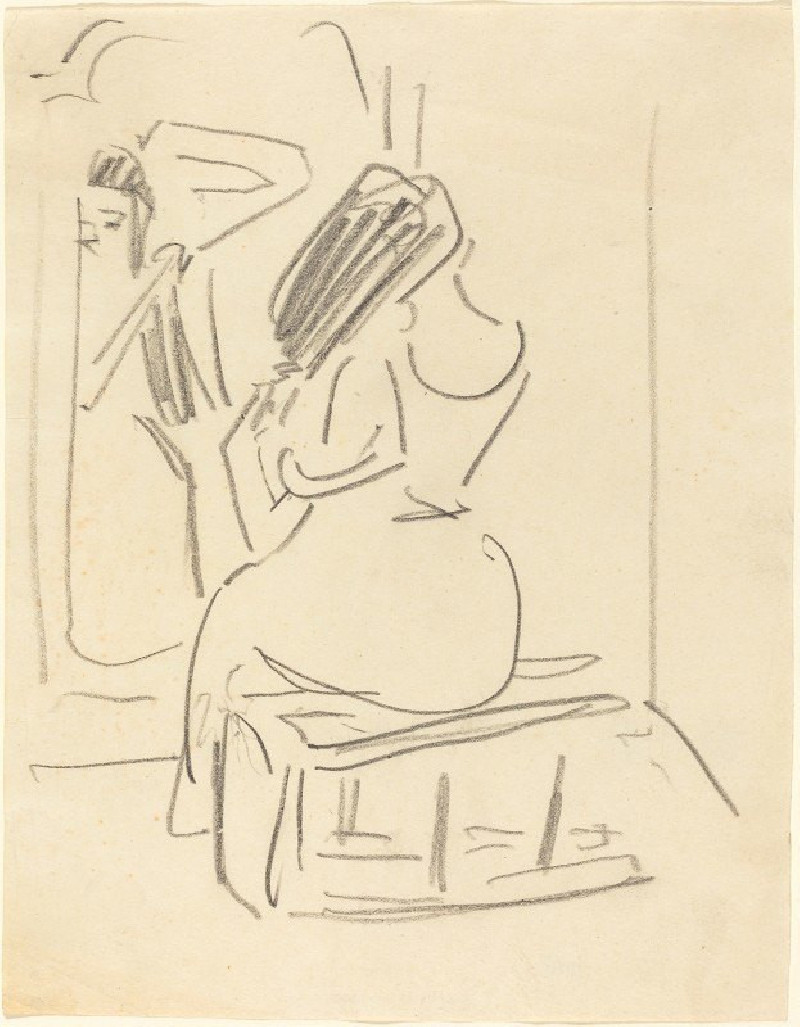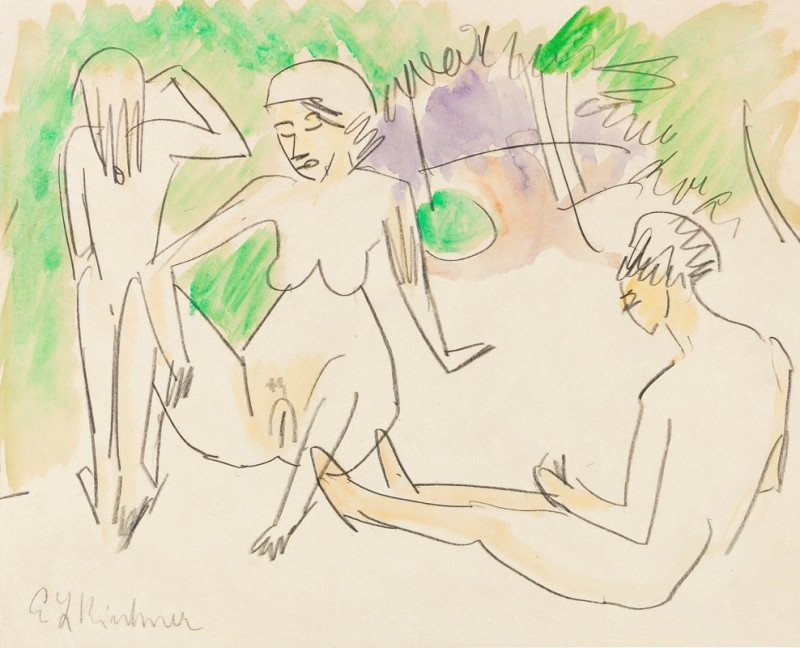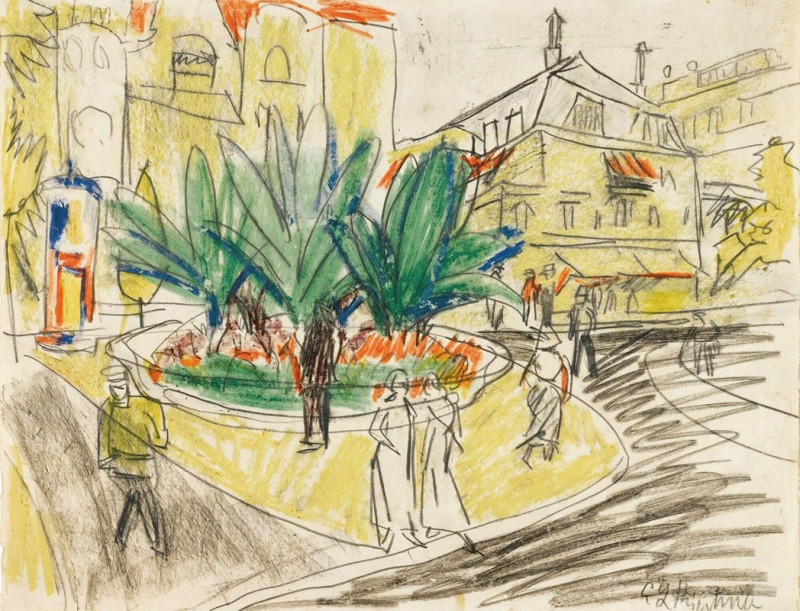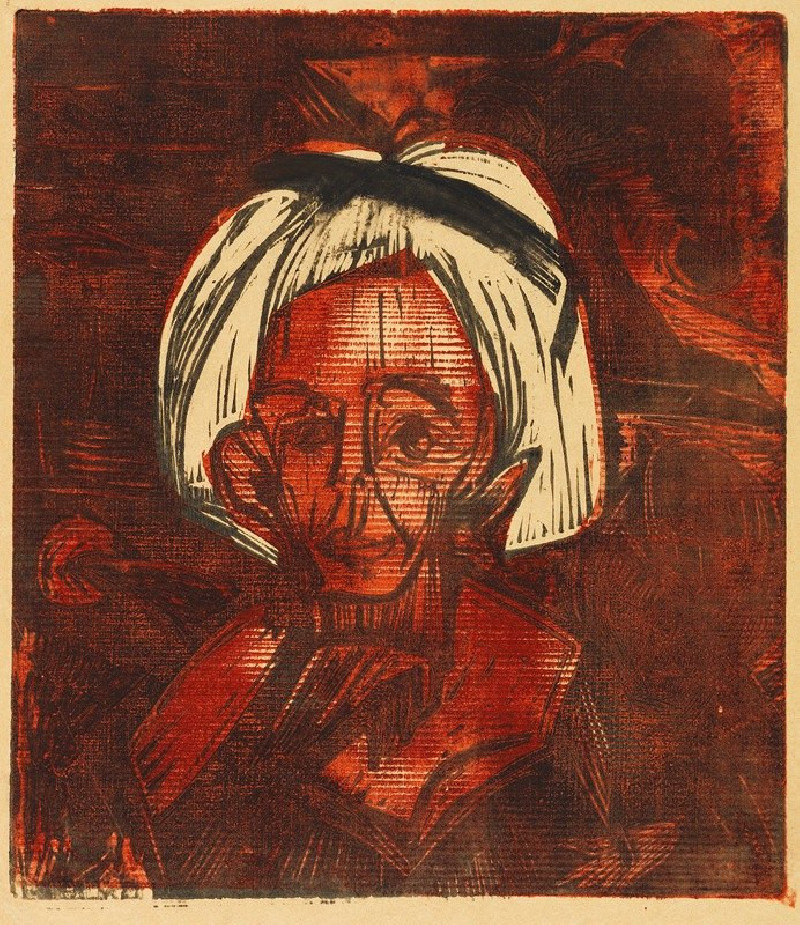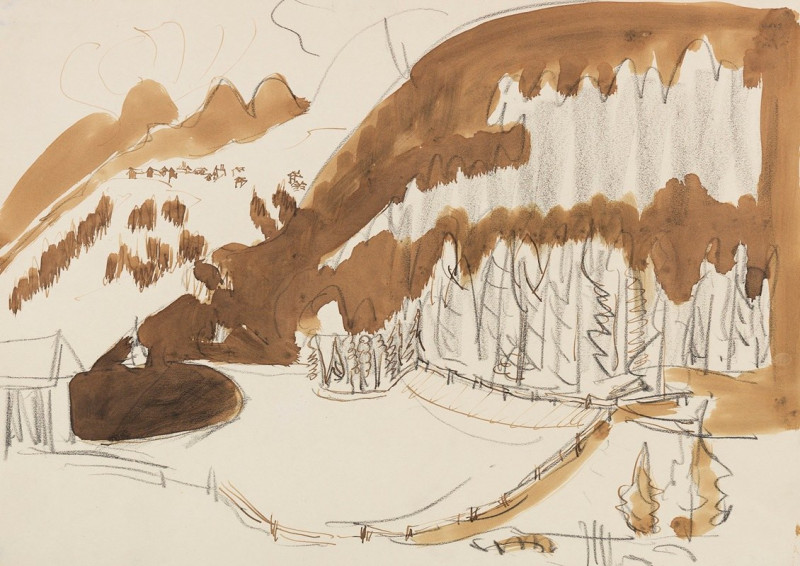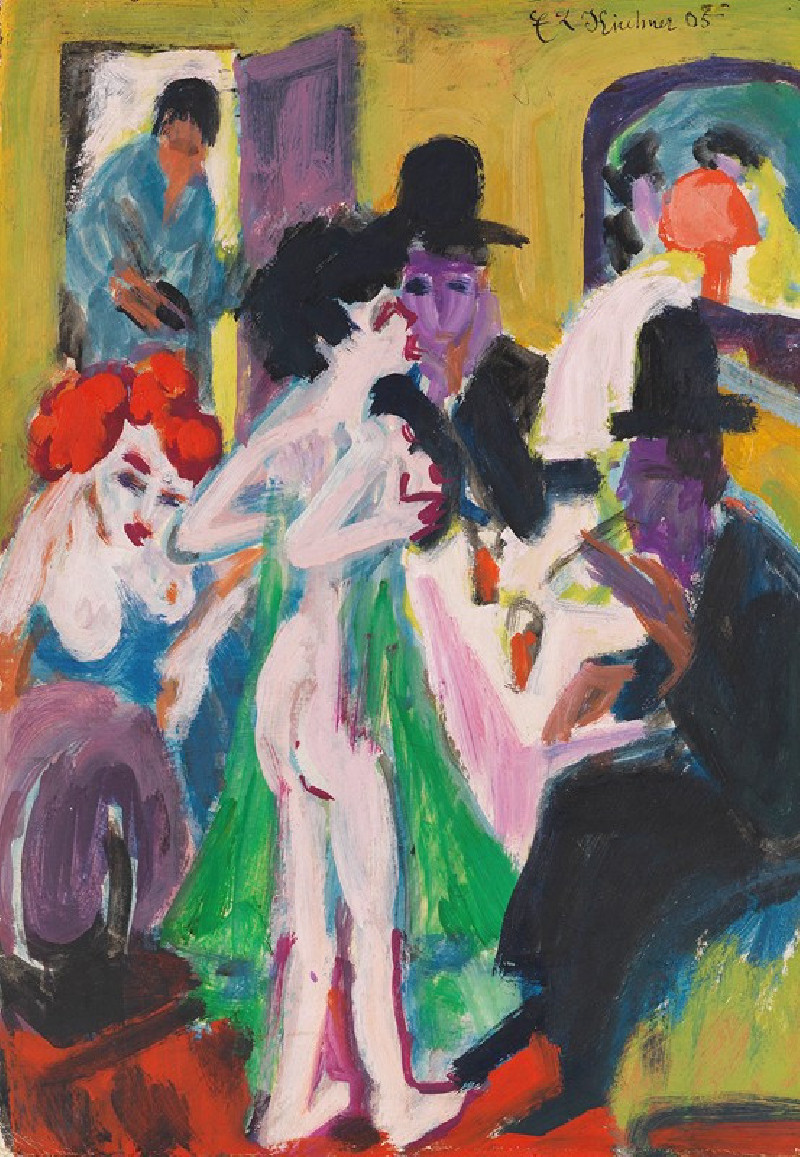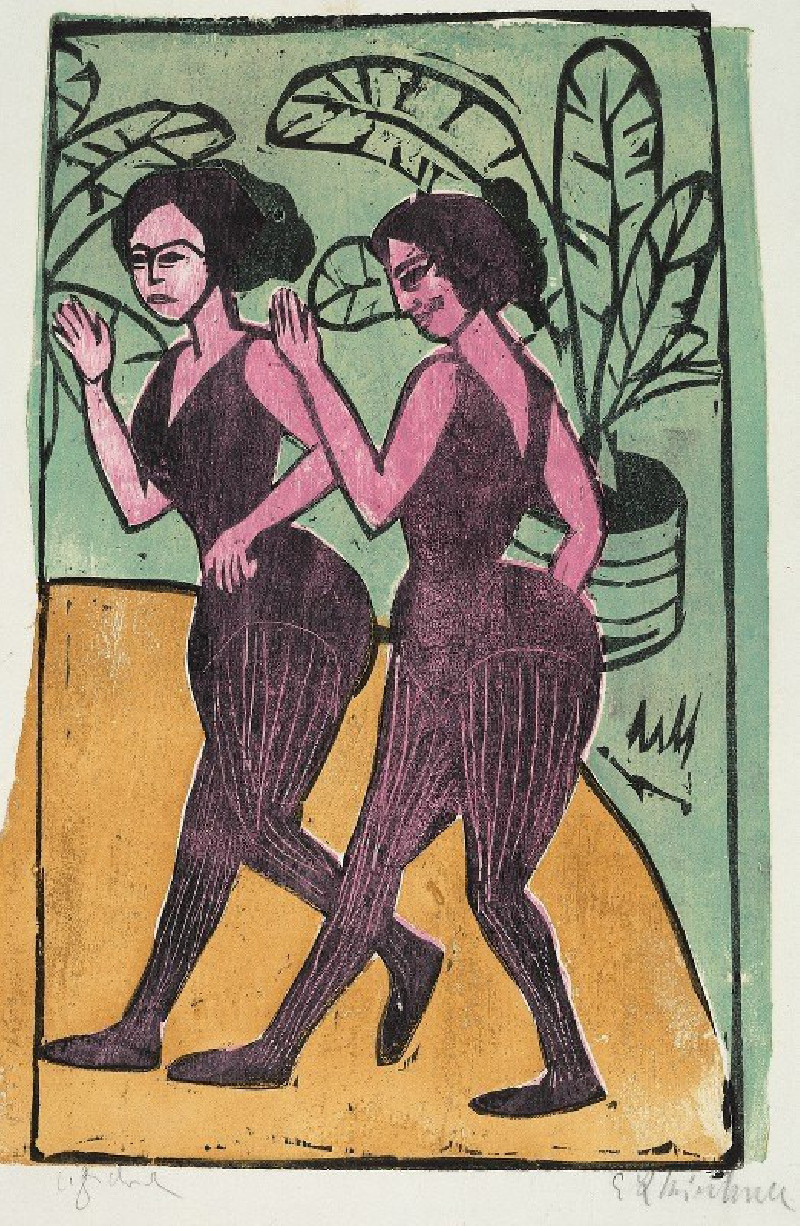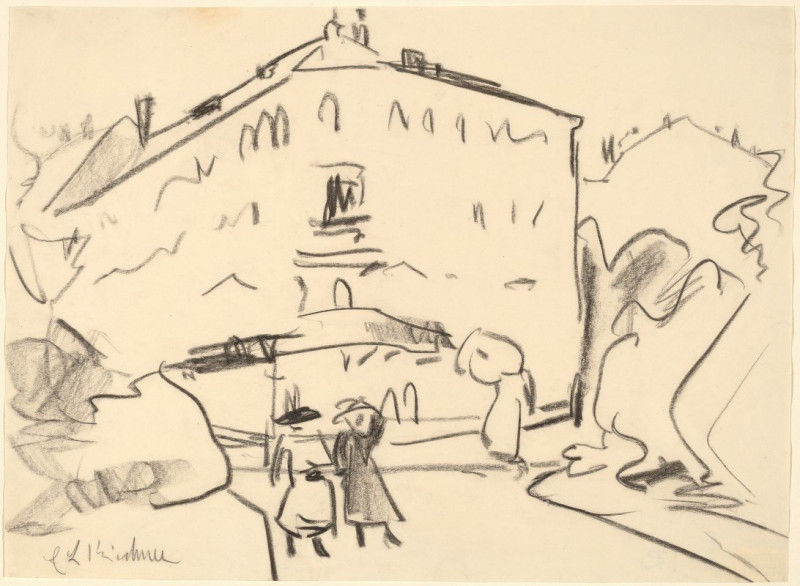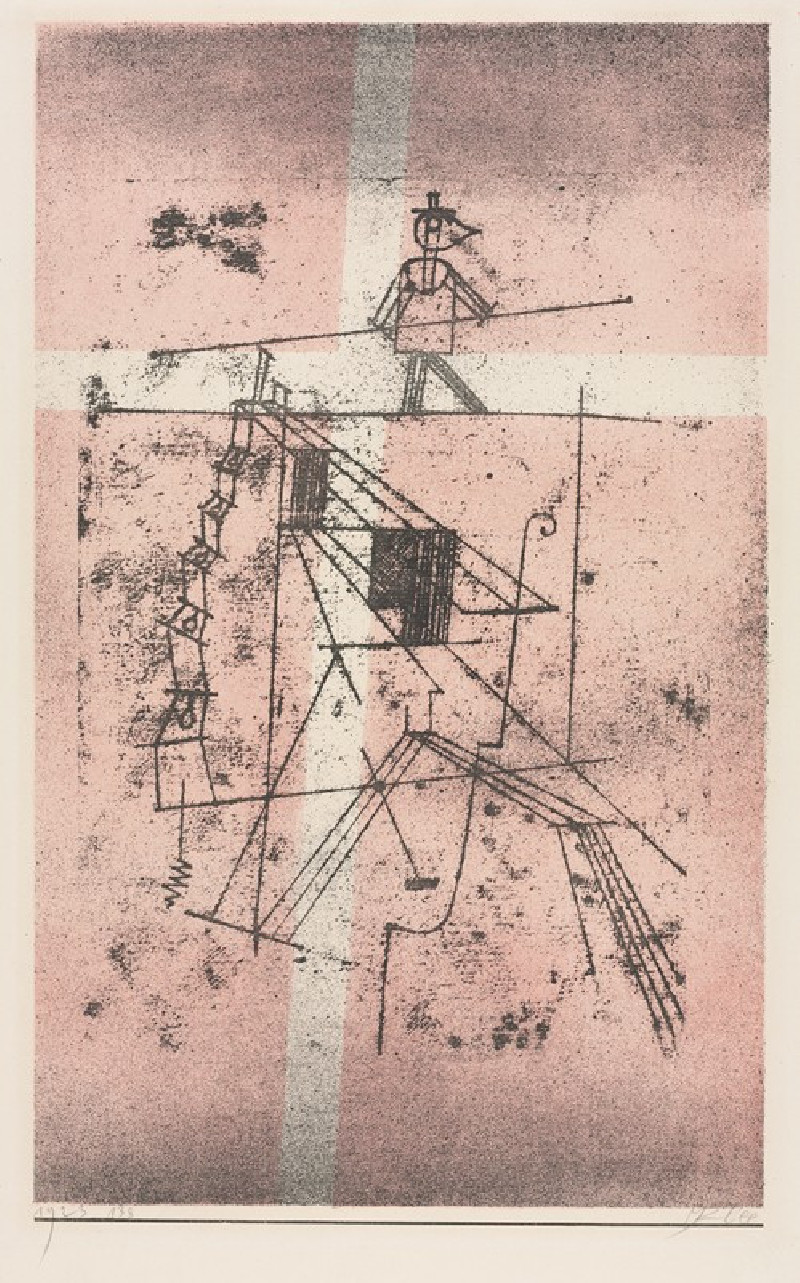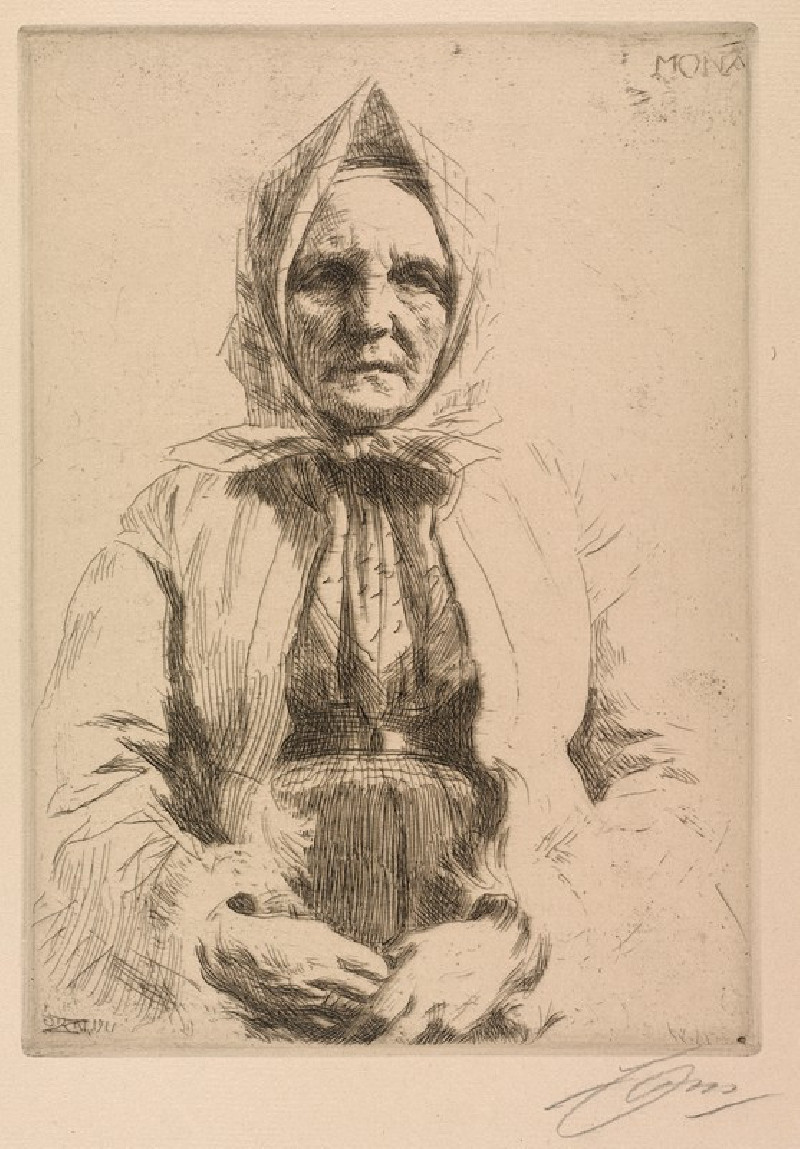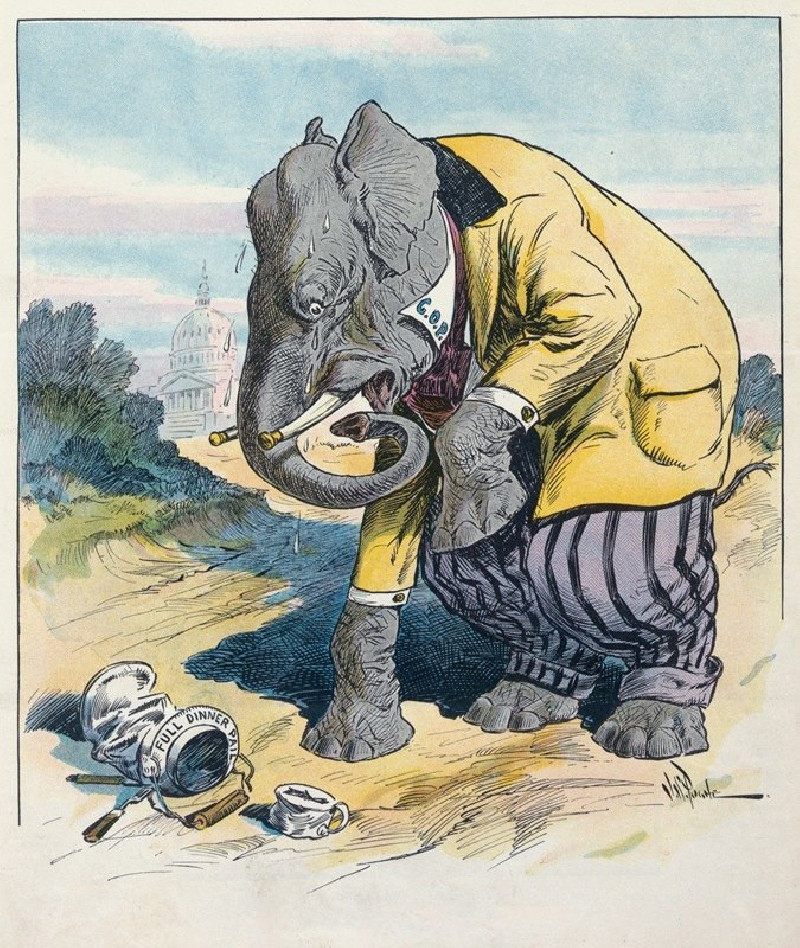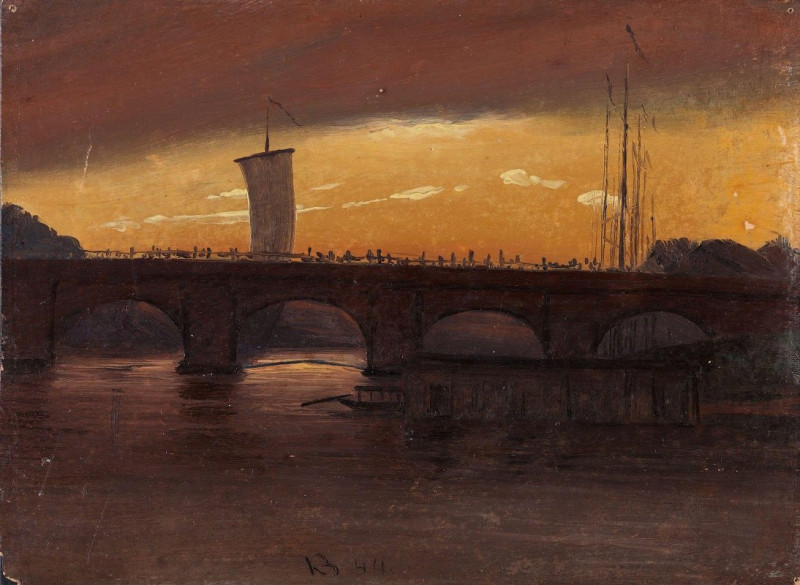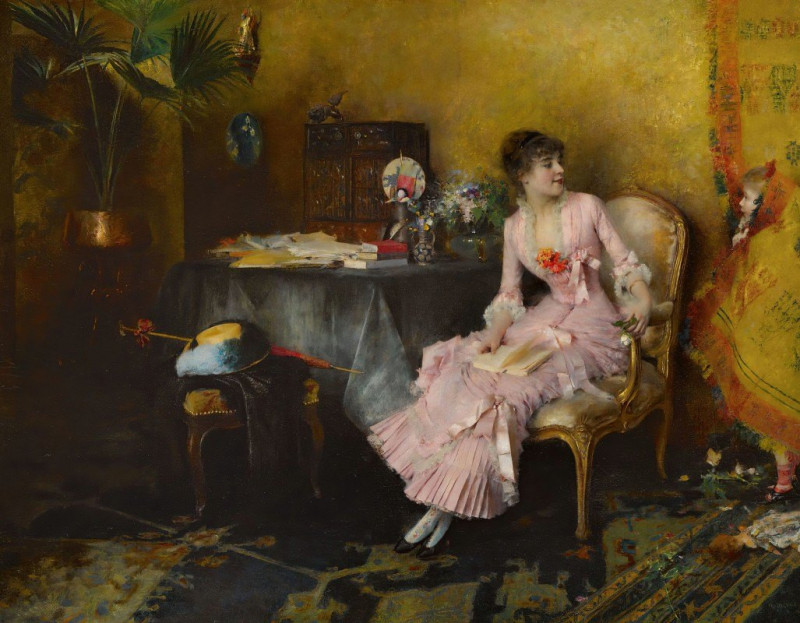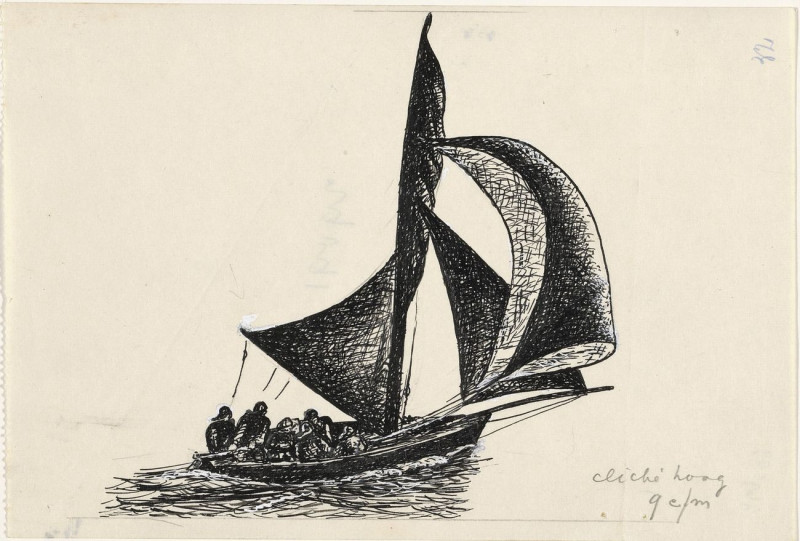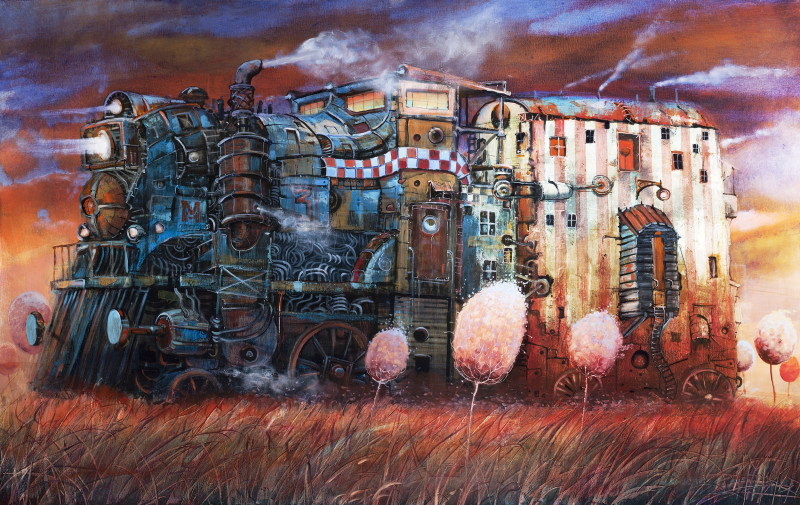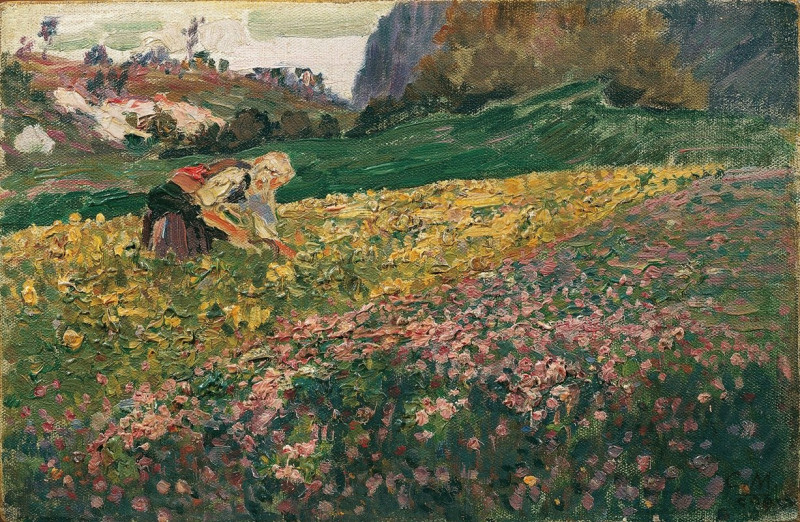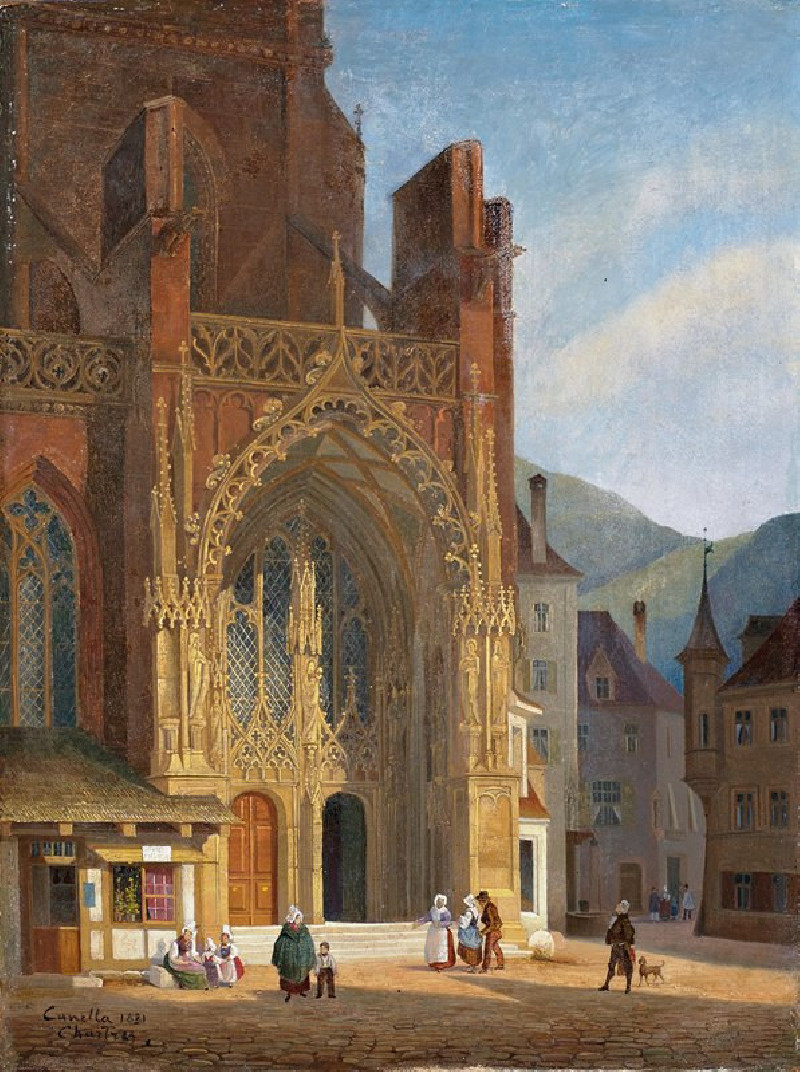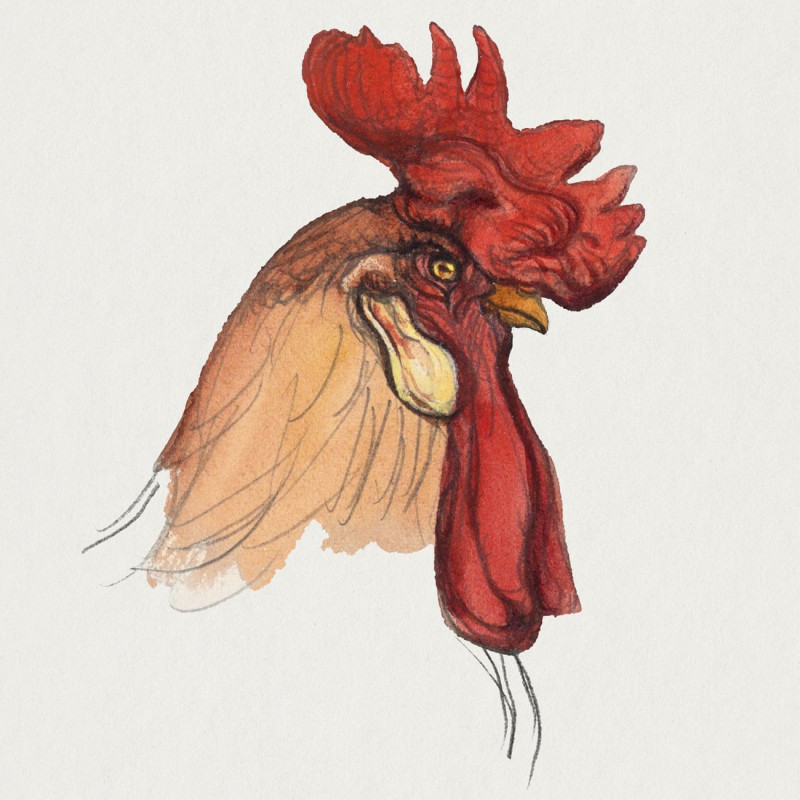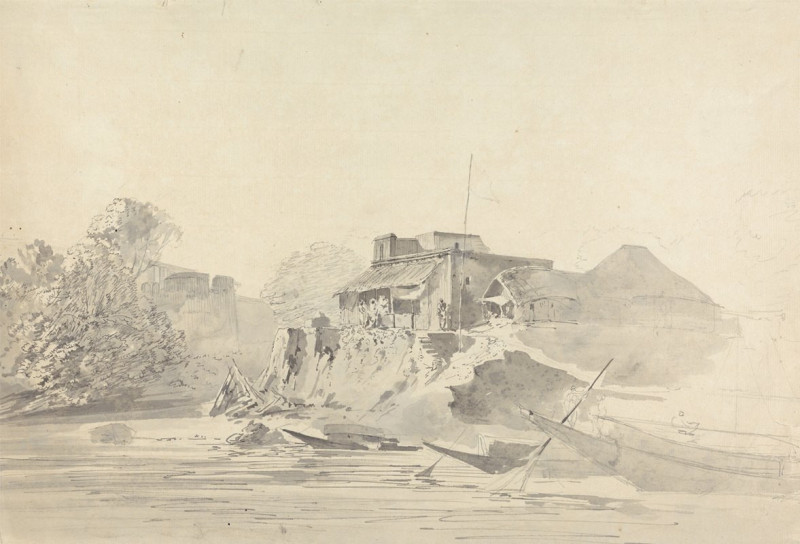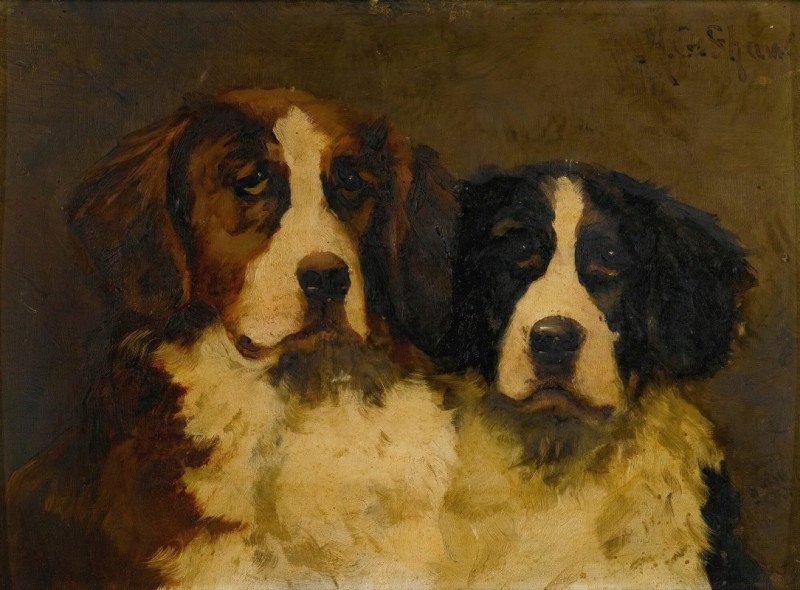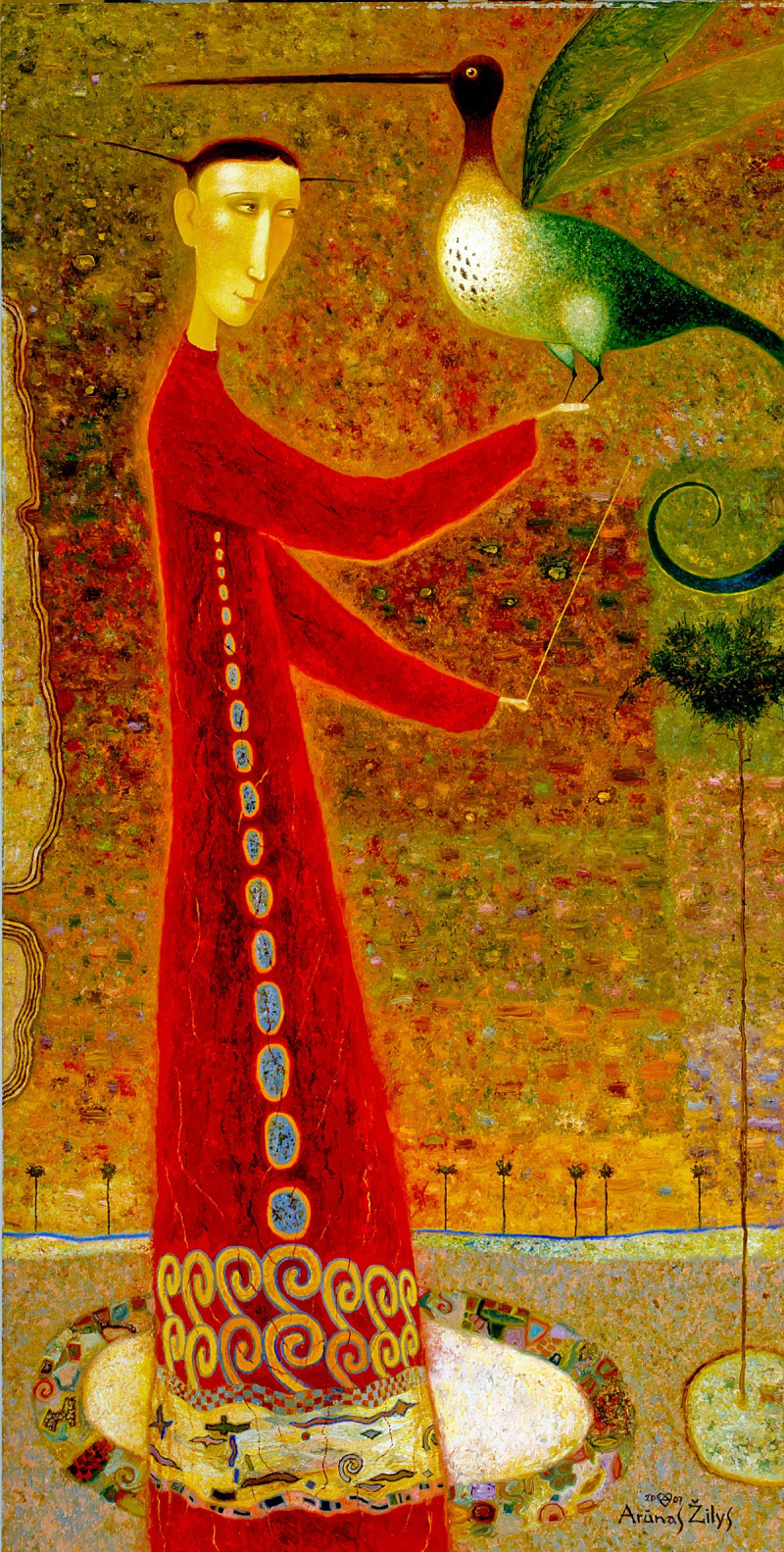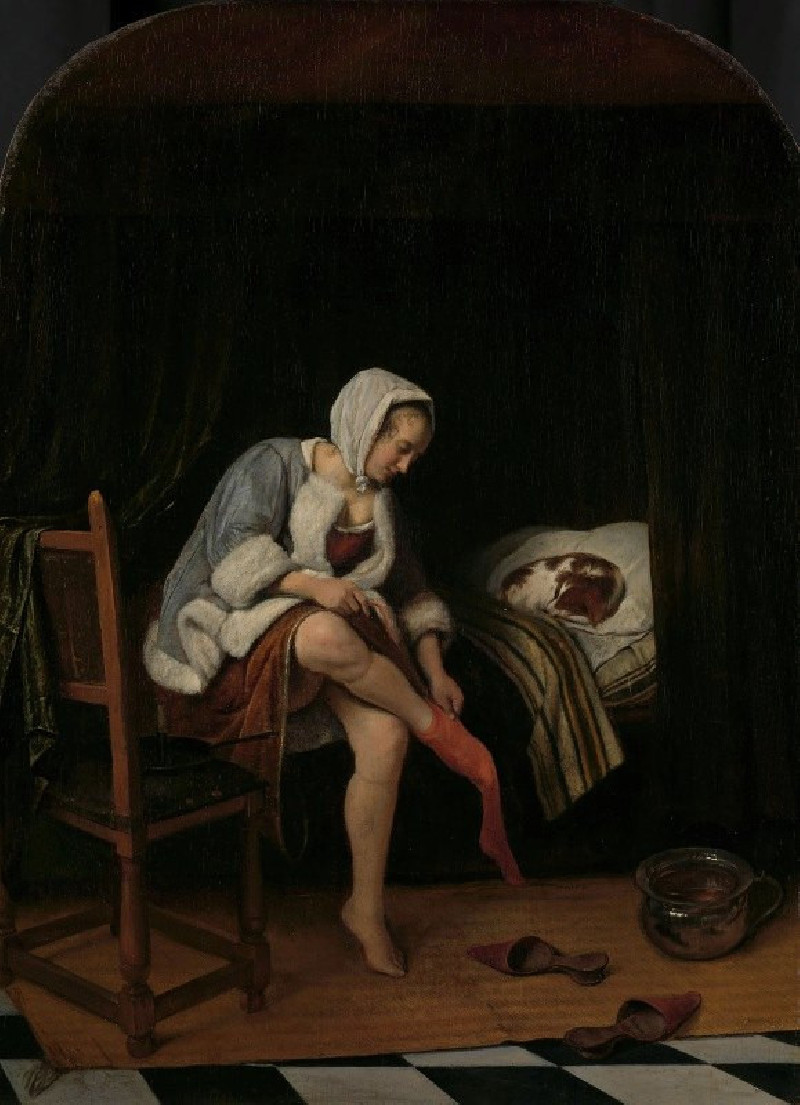Liegender Akt (1911)
Technique: Giclée quality print
Recommended by our customers
More about this artwork
"Liegender Akt" (1911) by Ernst Ludwig Kirchner is a compelling piece that reflects the essence of Expressionist art. This woodcut print features the bold, fluid lines and stark contrasts characteristic of Kirchner's work, capturing a raw, emotional intensity that is typical of the Expressionist movement.The artwork portrays a nude figure reclining amidst a dynamic arrangement of forms and mask-like faces that surround and gaze upon the central figure. The interaction of the figures and the surrounding shapes creates a sense of movement and distortion, which may evoke various emotional interpretations from viewers.Kirchner’s use of stark black and white in the print further intensifies the dramatic and expressive quality of the piece, inviting the viewer to explore themes of vulnerability, observation, and the human form as seen through an Expressionist lens.This piece is a remarkable example of Kirchner's skill in woodcut techniques and his ability to convey complex human emotions through simplified forms and lines.
Delivery
Returns
Ernst Ludwig Kirchner (1880–1938) was one of the most important German Expressionist painters. He was a co-founder of Die Brücke, a group of German expressionist artists formed in Dresden in 1905. Die Brücke and Kirchner took inspiration from Vincent Van Gogh and Edvard Munch, as well as African and Oceanic art. They used woodblock printing as a medium to showcase their signature style: flat, unrealistic images with vivid colors. The recurring themes in Kirchner's artworks included exotic cultures, faraway landscapes, self-portraits, dancers and Berlin street life. His paintings and prints effectively portrayed non-European cultures despite the fact that he never traveled outside of Europe.

